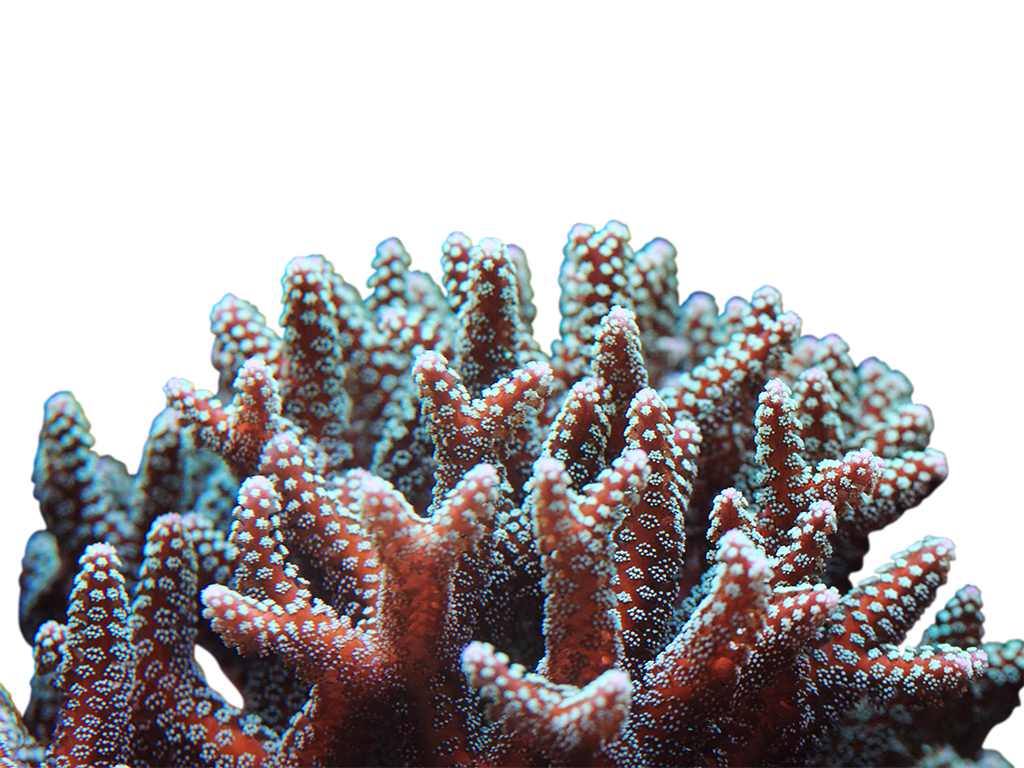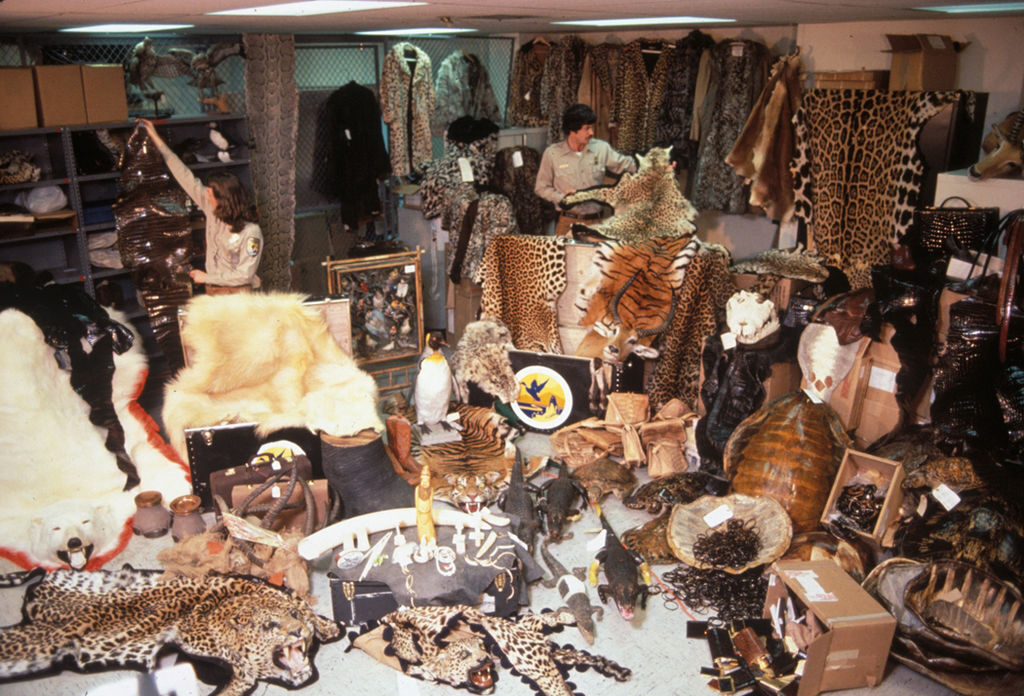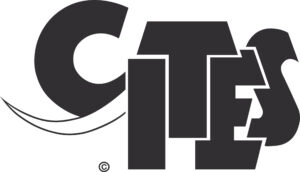Förgiftad av fiskar
Det finns ett stort antal fiskar på jorden, och minst 1000 olika arter som är giftiga. Fiskarna kan förgifta människor eller andra djur, antingen när den äts, eller genom att stickas. Ofta används giftet som ett försvar mot rovdjur, men det kan också vara ett sätt att döda bytesdjur. Vissa giftiga fiskar är färgglada eller har långa, synliga fenstrålar, för att på förhand varna rovdjur.
Om man äter en giftig fisk kan man bli illamående, eller få kramper, huvudvärk, diarré, yrsel, synförändringar och hjärtproblem. I vissa fall kan man kvävas, genom att andningsorganen blir förlamade. Blir man stucken av en giftig fisk kan man få liknande symptom, och det är vanligt att blodflödet sjunker så mycket att blodet inte längre pumpas runt normalt. Det kallas medicinsk chock. Ett stick från en giftig fisk kan vara otroligt smärtsamt, och i vissa fall till och med vara livsfarligt!
Stingrockor är en grupp broskfiskar med flera olika arter. De har en giftig tagg på stjärten som försvar. Det gör fruktansvärt ont att bli träffad av taggen, och man kan bli mycket sjuk med svullnad och kräkningar. Det är ovanligt att människor dör av att ha blivit stuckna av en stingrocka, men det har hänt.
Bild: James-St.-John-CC-BY
Kulfiskens kropp innehåller gift. Detta gör att de är farliga att äta och vissa arter är även dödliga för oss människor. I Japan anses det vara en delikatess att äta kulfisk, det kallas för ”fugu”. Det är endast specialtränade kockar som får tillaga denna maträtt.
Prickig koffertfisk lever i korallrev i Asien och den utsöndrar ett gift från körtlar på ryggen. Giftet är bara farligt om man äter fisken.
Bild: Betty-Wills-CC-BY-SA
Tropiska fiskar som sticks
Stenfiskar ingår i gruppen skorpionfiskar. Stenfisken är mycket giftig, och lever i de tropiska delarna av Stilla Havet och Indiska Oceanen. Den har 13 gifttaggar på ryggen som den sticks med. Det är en av jordens giftigaste fiskar, och flera människor har dött av att ha råkat trampa på den. Stenfisken ligger ofta på botten, och har ett välutvecklat kamouflage som gör den svår att upptäcka.
Drakfiskar har långa fenor och fenstrålar som står ut från både sidorna och ryggen. Den lever i korallrev. Spetsarna på ryggfenans fenstrålar är giftiga. Drakfiskens stick är sällan dödligt för människor, men det är ett nervgift som ger svår smärta, kräkningar och andningsproblem, och kräver läkarhjälp.
Stenfisken har 13 gifttaggar på ryggen, som är kopplade till giftblåsor inne i kroppen. Giftet angriper blodet, nerverna och hjärtat och orsakar chock, förlamning och celldöd. Den är en av världens giftigaste fiskar!
Bild: Bernard-DUPONT-CC-BY-SA
Drakfiskarna har ihåliga fenstrålar i ryggfenan, som fungerar som injektionsnålar. Alla drakfiskar är giftiga, men det är väldigt ovanligt att människor dör av giftet. Däremot är det fruktansvärt smärtsamta att trampa på en drakfisk och få in dess gift i kroppen.
Bild: Jens-Petersen-CC-BY
Fjärsingen är en art som förekommer i svenska vatten. Den har giftiga taggar på ryggen. Det är inte dödligt att bli stucken av en fjärsing, men området runt sticket svullnar och man kan drabbas av feber, illamående, huvudvärk och yrsel, och det är viktigt att söka läkarvård.
Bild: Helge-Busch-Paulick-CC-BY-SA
Havets huggorm och Sveriges enda giftiga fisk
Fjärsing är den enda fiskarten i svenska vatten som har ett farligt gift. Den har gifttaggar som sitter dels på gälarna, dels på den främre ryggfenan. Man kan sticka sig på den av misstag när man badar, eller om man lossar den ur fiskenät. Fjärsing finns längs med svenska västkusten ner till Öresund. Ett stick ger kraftig inflammation med smärta, svullnad och domningar, och man måste söka läkarhjälp. En släkting till fjärsing heter mindre fjärsing. Den kallas för havets huggorm, eftersom den är Europas giftigaste fiskart. Mindre fjärsing lever längs med Danmarks kust och i stora delar av Atlanten, Svarta havet och Medelhavet.

Stenkoraller

Bygger grunden till korallrev
Stenkoraller har hårda skelett, som de bygger av kalcium de plockar upp från havsvattnet. Korallerna är beroende av hög kalkhalt i vattnet för att få hållbara skelett. Koraller lever i haven över stora delar av jorden. De är vanligast i tropiska vatten, men lever också i svenska vatten utanför Bohuslän.
Stenkoraller har stor betydelse för att bygga upp korallreven, eftersom de bildar hårda kalkskelett som blir kvar även efter korallens död. Stenkoraller kan ha många olika former, som greniga, runda, skivformade eller knöliga. Stenkoraller som lever i kolonier kan till exempel likna en hjärna, eller ett älghorn.
Stenkorallernas hårda skelett är det som utgör grunden för världens korallrev.
Bild: Toby-Hudson-CC-BY-SA
Korallreven innehåller många gömställen för alla möjliga arter.
Bild: Nick-Hobgood-CC-BY-SA
Acroporakoraller kan likna hjortdjurens horn.
Bild: MDC-Seamarc-Maldives-CC-BY-SA
Stenkorall med en yta som påminner om en hjärna.
Bild: Ryan-McMinds-CC-BY
Korallers strukturer kan vara väldigt olika.
Bild: Ryan-McMinds-CC-BY
Stenkoraller kan växa som tickor eller stora sjok med lavar.
Bild: Williams-et-al.-CC-BY
Under de mjuka, långa tentaklerna gömmer sig anemonkorallens hårda kalkskelett.
Bild: Bernard-DUPONT-CC-BY-SA
Svampkoraller i Indonesien.
Bild: Bernard-DUPONT-CC-BY-SA
En kallvattenskorall med spännande växtsätt, som lever på djup ner till 1500 meter.
Ett bulligt, svampigt växtsätt för en stenkorall.
Bild: Diego-Delso-CC-BY-SA
Har alger som inneboende
Stenkoraller tillhör ordningen koralldjur, och det finns ca 2500 arter. En korall är oftast en hel koloni av små polyper, som var och en är en egen individ – ofta kopior av varandra. Polyper har en säckliknande kropp som skyddas av ett yttre kalkskelett. Stenkoraller lever oftast, men inte alltid, i stora kolonier.
Många arter av stenkoraller lever i symbios med så kallade zooxantheller, som är en typ av encelliga alger. Zooxantheller lever inuti polyperna. De bidrar till korallens energiförsörjning, och behöver solljus som når ner genom vattnet för att överleva. Stenkoraller i kolonier är hårdare och tåligare än ensamlevande. Men de stenkoraller som lever ensamma, kan finnas ända ner till 6000 meters djup! Djuplevande koraller får sin näring genom att äta plankton som flyter förbi i vattnet.
Varje polyp är en egen individ, som tillsammans bildar en korallkoloni.
Bild: Peter-Young-Cho-CC-BY-SA
I mitten av polypen sitter koralldjurets mun.
Bild: Justin-Casp-CC-BY-SA
Små polyper som delvis är utfällda.
Bild: David-Witherall-and-Pete-Morrison-CC-BY
Mikroskopiskt små polyper med fångstarmar.
Bild: Narrissa-Spies-CC-BY-SA
En polyp som alldeles nyss fäst mot ett underlag. De bruna prickarna är korallens inneboende alger, zooxantheller.
Bild: Narrissa-Spies-CC-BY-SA
Zooxantheller kallas de alger som är de vanligaste inneboenden i koraller. Här i mikroskop.
Bild: Tim-Wijgerde-CC-BY-SA

Vad är Rödlistan?
Rödlistning är ett sätt att bedöma om olika djur- och växtarter är utrotningshotade utifrån kriterier som hur många djur eller växter som finns av arten och hur utbredda de är. En nationell rödlistning bedömer artens risk att dö ut inom ett lands gränser. Den internationella rödlistningen bedömer artens risk att dö ut över hela jorden.
Läs mer

Om rödlistning i Sverige: Artdatabanken, www.artdatabanken.se
Om rödlistning i världen: International Union for Conservation of Nature, IUCN, www.iucn.org

Vad är CITES?
För att bekämpa olaglig handel med djur och växter finns en internationell överenskommelse om handel, som heter CITES. CITES innebär att utrotningshotade djur och växter inte får köpas eller säljas mellan olika länder utan tillstånd.
CITES klassar olika arter i olika kategorier (som kallas Appendix I, II och III) beroende på hur hotad arten är. Ju större hotet från handeln är desto högre skydd. Inom EU finns ytterligare skydd för arter i CITES. EU:s egen klassning har fyra steg: A-D.

Bild: Steve-Hillebrand
Förbjudet att handla med viltfångade arter
Högst skydd mot handel har de arter som är inom kategori A och B. Här gäller oftast att handel mellan EU och övriga världen är förbjuden utan tillstånd. Arter som är CITES A eller B-klassade får inte heller köpas eller säljas inom EU om det inte kan bevisas att de har lagligt ursprung och inte fångats i det vilda.
Att använda växter eller djur för att tillverka souvenirer och annat är också förbjudet. Den som bryter mot reglerna kan dömas till böter eller fängelse.
Kontrollera spridning av arter

Arter som är CITES C-klassade är utrotningshotade i ett visst land men inte nödvändigtvis i hela världen. CITES D-klassning betyder att en art importeras i så stort antal att de behöver regleras för att inte riskera att sprida sig okontrollerat där de inte hör hemma.

Poisoned by fish
There are a huge number of fish on earth, and at least 1,000 different species that are poisonous or venomous. Fish can poison or envenom humans or other animals, either when eaten, or by stinging. Often the venom is used as a defence against predators, but it can also be a way of killing prey. Some venomous and poisonous fish are brightly coloured or have long, visible fin rays, to warn predators in advance.
Eating a poisonous fish can make you feel nauseous, or cause cramps, headaches, diarrhoea, dizziness, vision changes and heart problems. In some cases, you may suffocate, through paralysis of the respiratory system. If you are stung by a venomous fish, you may experience similar symptoms, and it is common for circulation to drop so much that blood is no longer pumped around normally. This is called medical shock. A sting from a venomous fish can be incredibly painful, and in some cases even fatal!
Stingrays are a group of cartilaginous fish with several different species. They have a venomous stinger on the tail, as a defense. It hurts terribly to be stung, and you can get very sick with swelling and vomiting. It is rare for people to die from being stung by a stingray, but it has happened.
Photo: James-St.-John-CC-BY
The body of the pufferfish contains poison. This makes them harmful to eat, and some species are even deadly for us humans. In Japan, it is considered a delicacy to eat pufferfish, it is called "fugu". Only specially trained chefs are allowed to prepare this dish.
The spotted trunkfish lives in coral reefs in Asia, and it secretes a toxin from glands on its back. The poison is only harmful if you eat the fish.
Photo: Betty-Wills-CC-BY-SA
Tropical fish that sting
Stonefish belong to the Scorpaenidae family. The stonefish is highly venomous, and lives in the tropical parts of the Pacific and Indian Oceans. It has 13 venomous spines on its back with which it stings. It is one of the most venomous fish on earth, and several people have died from accidentally stepping on it. The stonefish often lies on the bottom, and has a well-developed camouflage that makes it difficult to detect.
The red lionfish has long fins and fin rays that protrude from both its sides and back. It inhabits coral reefs. The tips of the dorsal fin rays are venomous. The sting from the red lionfish is rarely fatal to humans, but it carries a neurotoxin that causes severe pain, vomiting and breathing problems, and it will require medical attention.
The stonefish has 13 spines on its back, which are connected to venom glands inside the body. The venom attacks the blood, nerves and heart of the victim, causing shock, paralysis and cell death. It is one of the world's most venomous fish!
Photo: Bernard-DUPONT-CC-BY-SA
Lionfish have hollow fin rays in their dorsal fin, which act as syringes. All lionfish are venomous, but it is very rare for humans to die from the venom. However, it is terribly painful to step on, and get stung by, a lionfish.
Photo: Jens-Petersen-CC-BY
The greater weever is a species that is found in Swedish waters. It has venomous spines. It is not fatal to be stung by a greater weever, but it leads to swelling, and you can suffer from fever, nausea, headache and dizziness. It is important to seek medical attention if you get stung by the greater weever.
Photo: Helge-Busch-Paulick-CC-BY-SA
The viper of the sea and Sweden’s only venomous fish
The greater weever is the only fish species in Swedish waters that has a dangerous toxin. It has venomous spines that are located partly on the gills and partly on the front dorsal fin. You can accidentally get stung by it when swimming, or if you attempt releasing it from a fishing net. The greater weever can be found along the west coast of Sweden down to Öresund. A sting causes severe inflammation with pain, swelling and numbness, and you will need to seek medical attention. A relative of the greater weever is called lesser weever. It is sometimes called ”the viper of the sea” as it is the most venomous fish species in Europe. The lesser weever lives along the coast of Denmark and in large parts of the Atlantic, Black and Mediterranean Seas.

Stony corals

The foundation for coral reefs
Stony corals have hard skeletons, which they build from the calcium they absorb from seawater. Corals depend on high levels of calcium in the water in order to develop sturdy skeletons. Corals live in the oceans across large parts of the world. They are most common in tropical waters, but also inhabit the Swedish waters off Bohuslän.
Stony corals play an important role in the building of coral reefs, as they form hard calcareous skeletons that remain even after the coral has died. Stony corals come in many different shapes, such as branching, rounded, disc-shaped or lumpy. For example, stony corals living in colonies may resemble a brain or moose antlers.
The hard skeleton of the stony corals are what makes the foundation of the world's coral reefs.
Photo: Toby-Hudson-CC-BY-SA
The coral reefs have lots of hiding places for many different species.
Photo: Nick-Hobgood-CC-BY-SA
Acropora corals can resemble antlers of deers.
Photo: MDC-Seamarc-Maldives-CC-BY-SA
A stony coral with a surface that resembles a brain.
Photo: Ryan-McMinds-CC-BY
There are many different structures of stony corals.
Photo: Ryan-McMinds-CC-BY
Stony corals can grow like bracket fungi, or large patches of lichen.
Photo: Williams-et-al.-CC-BY
The hard calcium skeleton of the anemone coral hides under its long, soft tentacles.
Photo: Bernard-DUPONT-CC-BY-SA
Fungia corals in Indonesia.
Photo: Bernard-DUPONT-CC-BY-SA
A species of cold water coral with an astonishing way of growing. It lives on depths down to 1,500 meters.
A stony coral growing in a round, lumpy way.
Photo: Diego-Delso-CC-BY-SA
Algae are common inhabitants
Stony corals belong to the class Anthozoa, and there are about 2,500 species. A coral is usually a whole colony of small polyps, each of which is a separate individual – often copies of each other. Polyps have a sack-like body protected by an outer calcareous skeleton. Stony corals usually, but not always, live in large colonies.
Many species of stony corals live in symbiosis with so-called zooxanthellae, a type of single-celled algae. Zooxanthellae live inside the polyps. They contribute to the energy supply of the coral and depend on sunlight penetrating deep into the water to survive. Stony corals in colonies are harder and more resilient than those living alone. But the stony corals that live alone can be found as deep as 6,000 metres! Deep-dwelling corals get their food from eating plankton that float by in the water.
Each polyp is an individual animal, together creating a coral colony.
Photo: Peter-Young-Cho-CC-BY-SA
The coral polyp's mouth is located in the middle of the animal.
Photo: Justin-Casp-CC-BY-SA
Small, partly extracted polyps.
Photo: David-Witherall-and-Pete-Morrison-CC-BY
Tiny polyps with even smaller tentacles.
Photo: Narrissa-Spies-CC-BY-SA
A recently attached polyp. The brown dots are the inhabitant algae of the coral - zooxanthellae.
Photo: Narrissa-Spies-CC-BY-SA
The most common algae living inside corals are zooxanthellae. The photo shows zooxanthellae seen through a microscope.
Photo: Tim-Wijgerde-CC-BY-SA

What is the Red List?
The Red List is a way to assess whether different animal and plant species are at risk of extinction based on criteria such as how many animals or plants of a species exist and how widely distributed they are. A national Red List assesses a species’ risk of dying out within national borders. The international Red List assesses a species’ risk of dying out worldwide.
Read more

About the Red List in Sweden: The Swedish Species Information Centre (Artdatabanken), www.artdatabanken.se/en/
About the Red List worldwide: The International Union for Conservation of Nature (IUCN), www.iucn.org

What is CITES?
CITES (the Convention on International Trade in Endangered Species of Wild Fauna and Flora) is a treaty that makes it illegal to buy or sell animals and plants that are at risk of extinction between countries without a permit.
CITES classifies species into different categories (called Appendix I, II and III) depending on how endangered each species is. In addition, the more the species is threatened by international trade, the higher its level of protection. Within the EU, CITES-listed species are further classified and protected by the EU’s own classification system. This has four Annexes, from A to D.

Photo: Steve-Hillebrand
Ban on trading wild-caught species
The highest protection against trade is given to CITES-listed species included in the EU’s Annexes A and B. Usually this means that trade between the EU and the rest of the world is illegal without a permit. There is also a ban on trading these species within the EU unless it can be proved that they have a lawful origin and were not caught in the wild.
It is also forbidden to use plants or animals to make souvenirs etc. Anyone who breaks these regulations can be fined or imprisoned.
Controlling the spread of species

CITES-listed species that are in the EU’s Annex C are classified as endangered in at least one country but not necessarily in the whole world. An Annex D classification means that individual members of a species may be imported to the extent that they do not need to be regulated to avoid any risk of them spreading uncontrollably where they do not belong.
